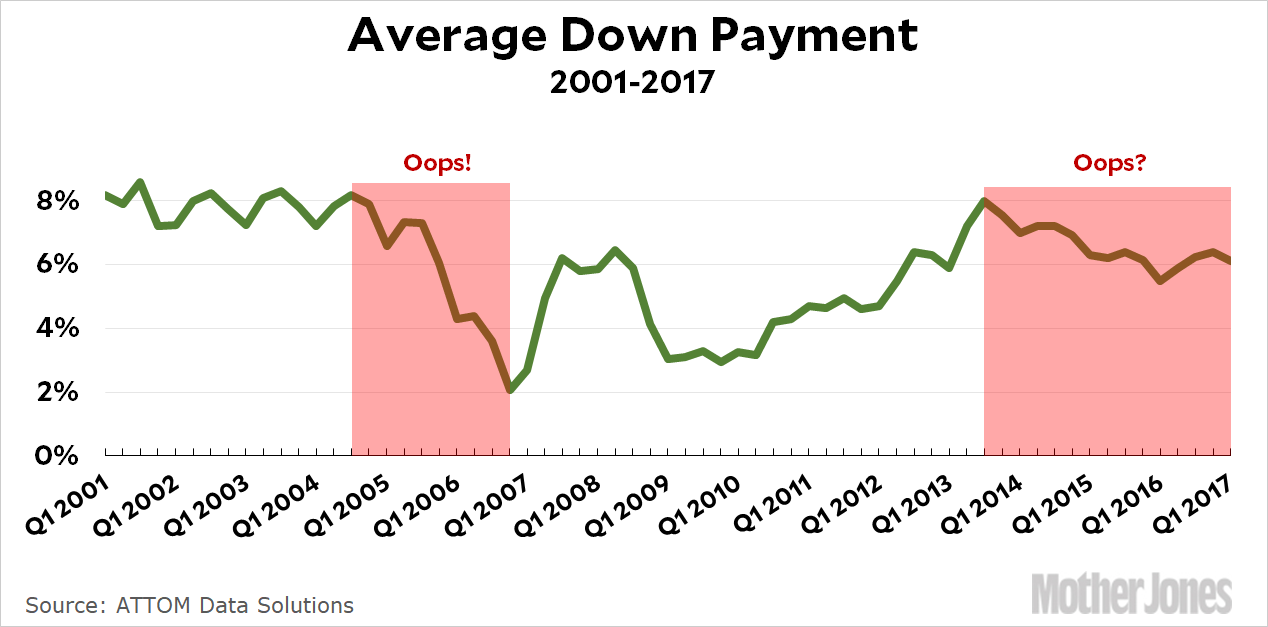This story has been making the rounds:
For first-time home buyers, the challenge of coming up with a 20% mortgage down payment is often difficult enough to keep them out of the market. But the fact is, the 20% down payment is all but dead — and has been for quite some time, especially for first-time buyers.
….More than 70% of noncash, first-time home buyers — and 54% of all buyers — made down payments of less than 20% over at least the last five years, according to the National Assn. of Realtors….But the association’s research finds few adults ages 34 and younger (just 13%) realize they can buy a house with a down payment of 5% or less.
….The “traditional” 20% down payment may become obsolete, even among big lenders. Brian Moynihan, chief executive of Bank of America, told CNBC in May that lowering the down payment requirement to 10% from 20% “wouldn’t introduce that much risk but would help a lot of mortgages get done.”
The answer to this problem, apparently, is “correcting consumer misconceptions” and pitching ever lower down payments to make up for the fact that home prices are spiking. And maybe that’s a good idea. I don’t know where the ideal point is for average down payments. But I will offer up the chart below as something to study. In the early aughts, down payments averaged around 8 percent and things were fine. Then they started going down. Then they started plummeting. This was telling us something, but by the time we crossed the 5 percent Rubicon it was too late.
We’re not there yet, and maybe we won’t get there. Maybe 5 percent isn’t really a warning sign after all. I’m not sure I want to find out, though.



















